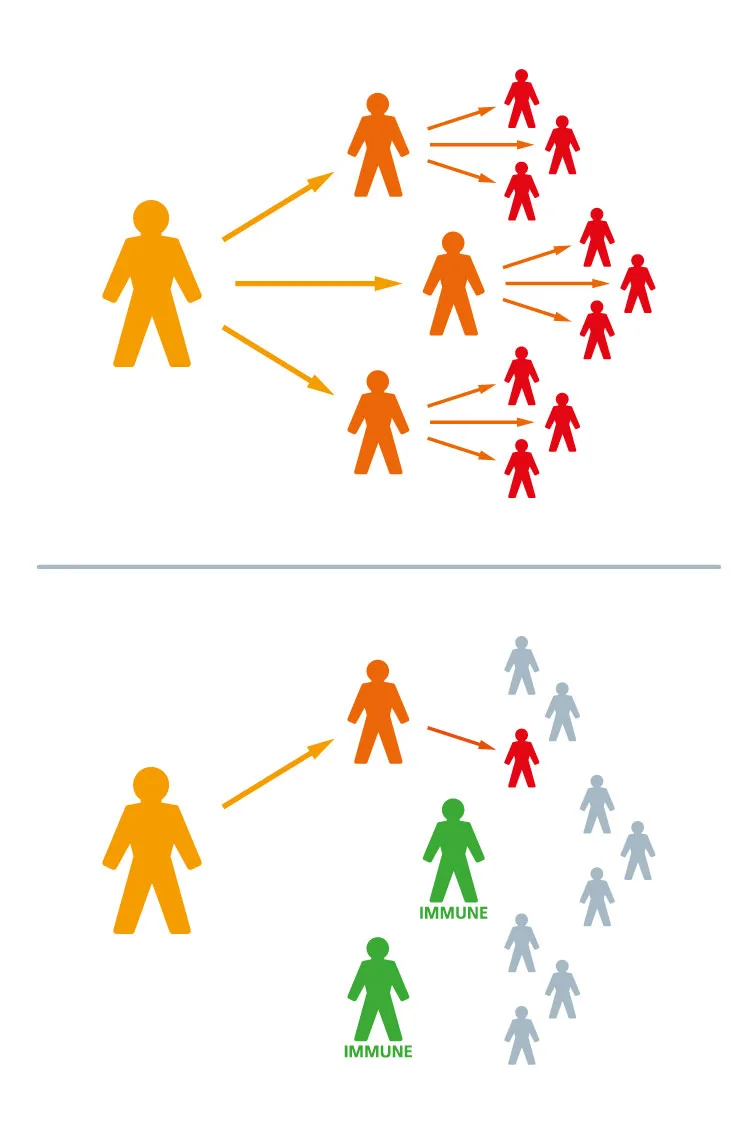Predict, Prevent, Protect: A Smarter Approach to Cold & Flu Season

Cold and flu season is approaching once again. With this seasonal shift into the fall and winter months comes a timely reminder to stay proactive about keeping our shared spaces healthy. Each year, the severity of these illnesses varies, so prevention is key. It is important to rely on surveillance efforts to predict what the season may bring, and control the factors we can control, such as hand hygiene and cleaning and disinfecting surfaces.
Surveillance and Predictions
To better prepare for the upcoming cold and flu season, we first need to predict how severe it may be. To do this, we typically turn to the countries in the Southern Hemisphere, specifically Australia, for early insights into their cold and flu season. Their fall and winter seasons occur during our summer, so they experience the cold and flu season before us. This helps us understand which disease strains to monitor and the illness rates we might expect. In Australia, the flu season typically runs from May to October. So far, there have been over 100,000 cases in Australia, with activity peaking much earlier than previous years2. This marks a large rise in both cases and severity, which means we might experience the same. Current predictions for the U.S. 2025–2026 cold and flu season suggest that it will be another intense season1. The U.S. had a difficult cold and flu season last year as well: February 2025 marked the end, with the highest rates of flu hospitalizations since 20091. Data from last year’s “high severity” season, along with Australia’s current struggles, point to early peaks and higher case numbers, suggesting a heavier burden than in recent years.
Why Respiratory Viruses Are Spreading So Fast
When vaccination rates are low, viruses like flu and COVID-19 can spread faster and infect more people. But how fast they spread is different depending on the virus. A common term in public health is the basic reproduction number, or R-naught (R0). This number shows how many people can get sick from one infected person in vulnerable or unvaccinated populations. Essentially, R0 is how contagious a disease can be. The three main factors for calculating R0 are:
- How the disease spreads (such as through surfaces or respiratory droplets in the air)
- How long an infected person can get others sick
- The average number of people an infected person contacts3
An R0 value below 1.0 means that each infected person spreads the disease to less than 1 person4. This suggests that the disease will likely die out in the population. In contrast, an R0 value above 1.0 shows that the disease is contagious and will continue to pose a risk to human health4. R0 values help to show key pathogens to manage and increase public awareness. R0 for the respiratory illnesses like cold, flu, and COVID-19 are typically greater than 1, and even higher when vaccination rates are low. We have seen greater spread of all these respiratory viruses in the past few years and expect this to continue. We should be prepared with infection control measures to help prevent the spread and keep people healthy. Luckily, we have ways of reducing the spread of disease, such as hand washing and cleaning and disinfecting surfaces.
R0 Values for Common Respiratory Viruses5–7
| Disease | Pathogen | R0 |
|---|---|---|
| Flu | Influenza virus | 1–2 |
| Common cold | Rhinovirus | 2–3 |
| COVID-19 | Coronavirus | 2–4 |
What We Can Do to Prevent the Spread
Understanding the risks of each respiratory virus is crucial. It also helps when deciding effective prevention and personal protection strategies. With the cold, flu and COVID-19 viruses, the best prevention measures include:
- Good hygiene and general precautionary measures, including wearing a face mask, distancing yourself from sick individuals, and getting the annual flu shot. Click to learn more about colds, flu and COVID-19.
- Cleaning and disinfecting contaminated and high-touch surfaces, such as doorknobs, light switches, and shared electronic devices (refer to our K–12 and office protocol guides for help with how to get started).
- Use an EPA-registered product (see product guidelines for more information and follow contact time for effective disinfection).
Forgoing any one of these can result in a higher risk of getting sick. Prevention doesn’t just help you stay safe, but it also protects your loved ones and community. With prevention measures like hand washing, regular cleaning and disinfecting of high touch surfaces, vaccination, and wearing masks in high-risk settings, we can help prevent the spread of flu this season.
Share this article
More from the Clorox Pro Blog
References
- UCLA Newsroom. (2025, March 5). As flu cases break records this year, vaccine rates are declining, particularly for children and 65+ adults. https://newsroom.ucla.edu/stories/vaccine-rates-decline-flu-cases-break-records-this-year
- Willis, O. (2025, June 12). “Now is the time”: Parents urged to vaccinate kids against flu. Low influenza and COVID vaccination rates spark concern as flu season kicks off. https://www.abc.net.au.news/health/2025-06-13/influenza-covid-vaccine-rates-flu-season-winter-illness.105405900
- Gunderson, A., & Woskie, L. (2024, May 28). Understanding predictions: What is R-naught?. Harvard Global Health Institute. https://globalhealth.harvard.edu/understanding-predictions-what-is-r-naught/#:~:text=person%20can%20infect.-,What%20is%20R-naught%3F,spreadability%E2%80%9D%20of%20an%20infectious%20disease
- Yadav, A., Kumar, S., Singh, G., & Kansara, N. (2021). Demystifying R naught: Understanding what does it hide? Indian Journal of Community Medicine, 46(1), 7. https://doi.org/10.4103/ijcm.ijcm_989_20
- VDH. (2022, January 7). How does COVID-19 relate to the flu?. Virginia Department of Health. https://www.vdh.virginia.gov/coronavirus/2022/01/07/covid-19-and-influenza-surveillance/#:~:text=For%20the%20flu%2C%20the%20R0,one%20to%20two%20more%20people
- Shabir, O. (2021, February 16). What is R0?. News Medical Life Sciences. https://www.news-medical.net/health/What-is-R0.aspx#:~:text=Common%20Cold%20%E2%80%93%202%2D3,Seasonal%20Influenza%20%E2%80%93%200.9%2D2.1
- WHO. (2020, June). What do we know about SARS-CoV-2 and COVID-19? World Health Organization. https://www.who.int/docs/default-source/coronaviruse/risk-comms-updates/update-28-covid-19-what-we-know-may-2020.pdf?sfvrsn=ed6e286c_2
















